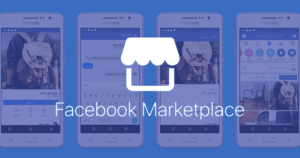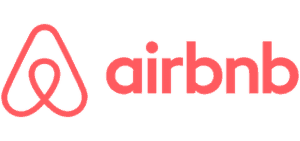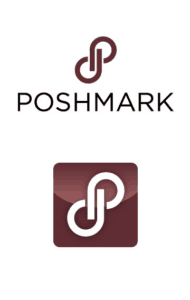 Brick and Mortar Sales Versus Online Sales
Brick and Mortar Sales Versus Online Sales
It is only recently that men and women have started buying things online more than a brick and mortar location. This, of course, if for a lot of reasons, the most notable being:
- Convenience
- Product Sales
Online stores will normally have some type of gratuity program in place by
signing up for an email list or creating a newcomer’s customer account, which
generally offers 10-20% a single purchase. - More Options
Because brick and mortar locations can only hold so much merchandise they
have limited stock choices, whereas online stores have access to the company’s
entire stock. - Easy Price Comparisons
Instead of driving to three or four different stores in order to find the best
deal to buy, you can easily compare different websites, products, and/or color
schemes from the comfort of your laptop, tablet, or smartphone. - Ability to Send Gifts
Gone are the days of purchasing, wrapping, and driving to the nearest post office to ship a birthday or X-Mas gift. Instead, most websites have gift wrap options
and easy ability to send any purchase as a gift.
However, brick and mortar locations allow for actual human interaction, which is a prime reason why in-person sales, while declining, will never truly die. Now more than ever with the onset of online sales and purchases, people crave that in-person interaction with someone who can listen to and understand their needs, wants, and desires in a product or service.
And yet, entering the brick and mortar field, especially when it comes to making your own sales is very, very difficult, and, in this technological day and age, is normally advised against. A brick and mortar location requires ample advertising, foot traffic, overhead costs, inventory upkeep and repurchase, and a steady stream of willing and able customers each and every day. Online sales require only half of these requirements, and so you can center around the customer’s wants and needs without having to worry about whether or not National Grid is going to shut off your lights within the next month.
Personal Sales or Full-On Business?
There are two very different ways to make money online with little to no overhead costs.
Primarily, you can develop some kind of online store for your product or service, whether that service is online personal training, a clothing brand, eyebrow threading and eyelash extensions, furniture repair, dog walking, or literally anything else that you can come up with. Basically, you can sell anything online and someone, somewhere, will purchase it.
There are plenty of options for developing an online store and website for your business. Some include:
- Wix website developer and online store
- Shopify
- Magento
- Volusion
- 3dcart
- Bigcommerce
All of these platforms can be accessed via a smartphone or tablet. However, they also require you to have a rather stable product or service already lined up and ready to sell; as most require some kind of minimal start-up cost, or at least a service fee per sale, having a stable product is paramount for success. “Winging it” per sale will not cut it in terms of online sales platforms.
Secondly, you can set up a temporary online store to sell products, old clothes and shoes, online services, used furniture, or basically anything that takes up space in your closet for a quick dollar. There are several online platforms, both as websites and smartphone apps (available for iTunes and the Google Play Store), that allow you to sell your used and unwanted items for money.
Let’s get into the different platforms that you can use to make upwards of $50 per day online, with no overhead cost, employee salaries, or inventory.
CraigsList
 CraigsList gets an absolutely horrible reputation because literally anyone and everyone uses, or has used, CraigsList to sell something in their lifetime.
CraigsList gets an absolutely horrible reputation because literally anyone and everyone uses, or has used, CraigsList to sell something in their lifetime.
CraigsList is divided per continent, country, and, if within the United States, per state and county, which makes it scarily location-accurate when trying to sell any of your unwanted things. It is then split up even further, into categories such as:
- Community
- Services
- For Sale
- Housing
- Discussion Forums
- Job Listings
- Gigs
- Resumes
However, when trying to sell something, it’s best advised to stick to either “For Sale,” if selling old or used clothes, shoes, furniture, etc., or “Housing” if trying to sell a spare bedroom or apartment.
CraigsList makes it very easy to sell old merchandise. Within the “For Sale” category, they have so many subcategories that you would be hard-pressed to not find exactly what it was you were looking for. For example, they have listings for everything from “antiques” to “motorcycles” to “computer parts”, and make it fairly simple to search for and list anything in any category.
To make a sale, then, simply take a photo of whatever you choose to sell, list it in the appropriate category, and wait for someone to take your bait. Bigger items, such as furniture, will sell for more. Likewise, the better quality something is the better chance you have of not only making the sale but making more money off of the sale, too. Therefore, making $50 a day on CraigsList requires no overhead, free membership to the website, and no shipping costs if the buyer chooses to pick-up their product (since they are already in your area!).
The Facebook Marketplace
The Facebook Marketplace is still fairly new — it only came out within the  last few years, and many of the website and app’s users have yet to familiarize it. However, for those who do use it — and, while it is not the entirety of FaceBook’s users it is still a fairly decent percentage — FaceBook marketplace is probably one of the most convenient ways to sell and purchase anything from a toaster to a backpack, to a used car.
last few years, and many of the website and app’s users have yet to familiarize it. However, for those who do use it — and, while it is not the entirety of FaceBook’s users it is still a fairly decent percentage — FaceBook marketplace is probably one of the most convenient ways to sell and purchase anything from a toaster to a backpack, to a used car.
The website is free to sign up and use, so logging into the Marketplace has no overhead or membership fees. Using the application is very similar to other online marketplaces, such as CraigsList or eBay. To use, simply:
- Make sure whatever product you are trying to sell is presentable, i.e wash and press clothes, wipe down and clean furniture, and wash your car before posting.
- Snap a photo of your product
- List onto the app, adding in its:
- Condition (new, used but like new, used but in good condition, etc.)
- Material (cotton, leather, etc.)
- Size / Dimensions (for furniture) or Sizing (for clothing)
- Location (by zip code)
- Category (clothes, furniture, etc.)
- Price
- Whether your product is shipped or for pick-up
After making your listing, any FaceBook user — and I mean any, as every single one of FaceBook’s users can see your listing — can view and purchase your product. They can also message you to request details about your listing, arrange a place to pick-up your product, and haggle the price.
Since you can list anything from a used car to a dresser to a pair of sneakers, using the Facebook Marketplace is a very easy way to make $50 or more per day. And, since you already own every single thing you list, there are no overhead costs. Labeling your product as “pick-up only” eliminates the need for shipping costs. Plus, FaceBook is free and does not take any profit margins because you make the sale either in cash or some type of money transfer app, so your sales are 100% yours for the taking.
 Airbnb
Airbnb
If you live in a city or right outside of a city, then hosting your house or apartment as an Airbnb is a very easy and very convenient way to make a substantial amount of money per month. In New York alone, you have the potential to make upwards of $2,550 per month just by renting out your home or spare room to vacationers. (However, be warned: some apartment leases strictly ban the use of your apartment as an Airbnb, so reread your lease and/or double check with your landlord before listing. Otherwise, you risk being kicked out of your apartment, and that’s just not worth it.)
Renting out your home or apartment as an Airbnb is a fairly simple process. To begin:
- Enter your location, whether you are listing a private or shared room, and how many people are allowed to stay within your rented room
- List the specifics of your listing, such as:
- The type of housing unit you have
- Whether or not space is set up for guests or is your actual living space
- Whether or not your listing is part of a company or business
- How many bedrooms and beds are available for your guests
- How many bathrooms are available for your guests
- Address, including country, county, and street address
- Amenities offered, such as towels, WiFi, television, toiletries, utilities, and safety amenities (smoke detector, fire extinguisher, etc.)
- Spaces the guests can use (living room, full kitchen, etc.)
After listing, guests can find your listing via the app or the Airbnb website and can book for any weekend that you have the space listed for. Having an apartment or house as an Airbnb basically means that you receive passive income again and again, and all you need to do is keep it clean and make sure you have fresh linens whenever renters come by.
Also, you can charge a significant amount per night depending on the size and quality of your listing. Because of this, Airbnb is one of the best ways to make over $50 per day without any overhead or employee costs. Signing up for Airbnb is also free, though they may take a small portion of your sales as a service fee.
PoshMark
 Unless you’re a woman aged between fifteen and twenty-eight or are friends with someone that is, chances are that you have never heard of PoshMark before. Which is sad, really, because PoshMark is that hidden gem app that can help you to clean out your entire closet, make upwards of $50 per day if you are persistent with it, and make room for you to buy new clothes and repeat the cycle all over again.
Unless you’re a woman aged between fifteen and twenty-eight or are friends with someone that is, chances are that you have never heard of PoshMark before. Which is sad, really, because PoshMark is that hidden gem app that can help you to clean out your entire closet, make upwards of $50 per day if you are persistent with it, and make room for you to buy new clothes and repeat the cycle all over again.
PoshMark is an online closet and is a place where both men and women can both purchase and sell used clothing, shoes, and accessories. PoshMark allows you to categorize your clothing fairly extensively and asks for specifics such as:
- Condition (new with tags, new without tags, used, etc.)
- Color
- Brand
- Quantity
- Description of the product
- Size
PoshMark also has a feature where you list the original listing price and replace it with the price you are selling the product at, so that your customer knows whether or not they are getting a good deal. For example, if I were to sell a pair of Adidas sneakers for $80 that was originally purchased at $120, I know that I am getting one heck of a deal. This makes the buyer more inclined to buy your product because, hey, they are saving $40! PoshMark also allows you to haggle and modify prices with potential buyers, just in case you want a better deal.
In addition, PoshMark also categorizes its merchandise via brand, the type of clothing, color, and size. They also host “parties” several times per day, where users can share their listings with a new crowd of people in the hopes of their product being bought. These “parties” can be by brand, season, age group, gender group, or just about anything else. Users, then, can share other user’s listing and follow them for updates on their closet.
What’s more, PoshMark has the option for the buyer to pay an additional shipping fee, and even generates a prepaid shipping label for you. All you need to do is print out the label and mail it, which takes maybe five minutes, and the profits are yours! Though, like most apps, PoshMark takes a small percentage fee from every sale.
Conclusion
There are a hundred or more ways to sell online. Whether you have developed your own product or service and are looking to sell strictly online, or you are looking to make some quick money with the old things you have laying around your apartment (or your apartment in general), online sales are quickly becoming the most efficient and cost-effective way to make money in today’s world. Through apps, websites, and online communities, making $50 or more per day has never been easier.

